Tenth Karmapa, Choying Dorje
Tibet
17th century
The right hand is extended in a giving gesture.
Tenth Karmapa, Choying Dorje
Tibet
17th century
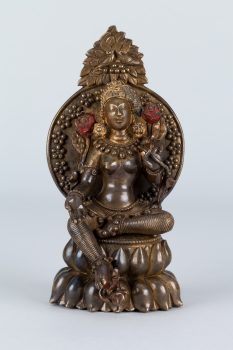
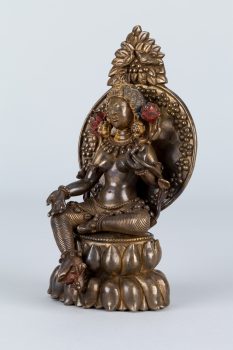
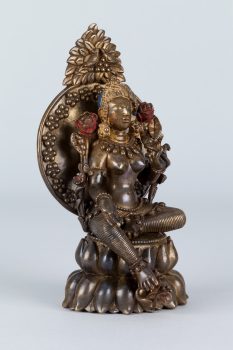
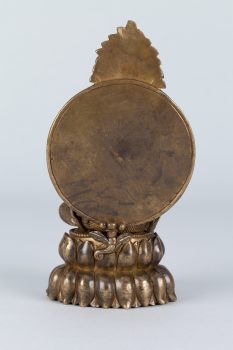
This sculpture is attributed to the hand of Choying Dorje (1604–1674), the Tenth Karmapa, who was head of the Karma Kagyu School of Tibetan Buddhism. An eccentric figure within the history of Tibetan art, the Tenth Karmapa possessed a highly individual style, looking to a range of traditions for inspiration, including ancient metalwork from Kashmir and Swat. These influences can be seen in this sculpture of the goddess Tara in the elliptical shape of the lotus petals that make up her seat and the striated pattern on her tight-fitting clothing, which closely models her form. Other aspects of the Tenth Karmapa’s personal style apparent in this sculpture include the heavy plates of hair piled on the left side of Tara’s head and the plasticity of her ornaments, such as her tremendous earrings and the bulbous bobbles of her necklace. The Karmapa’s love of animals is often subtlety incorporated into his works. Here, a pair of birds can be found nestled in a leafy bower above Tara’s head
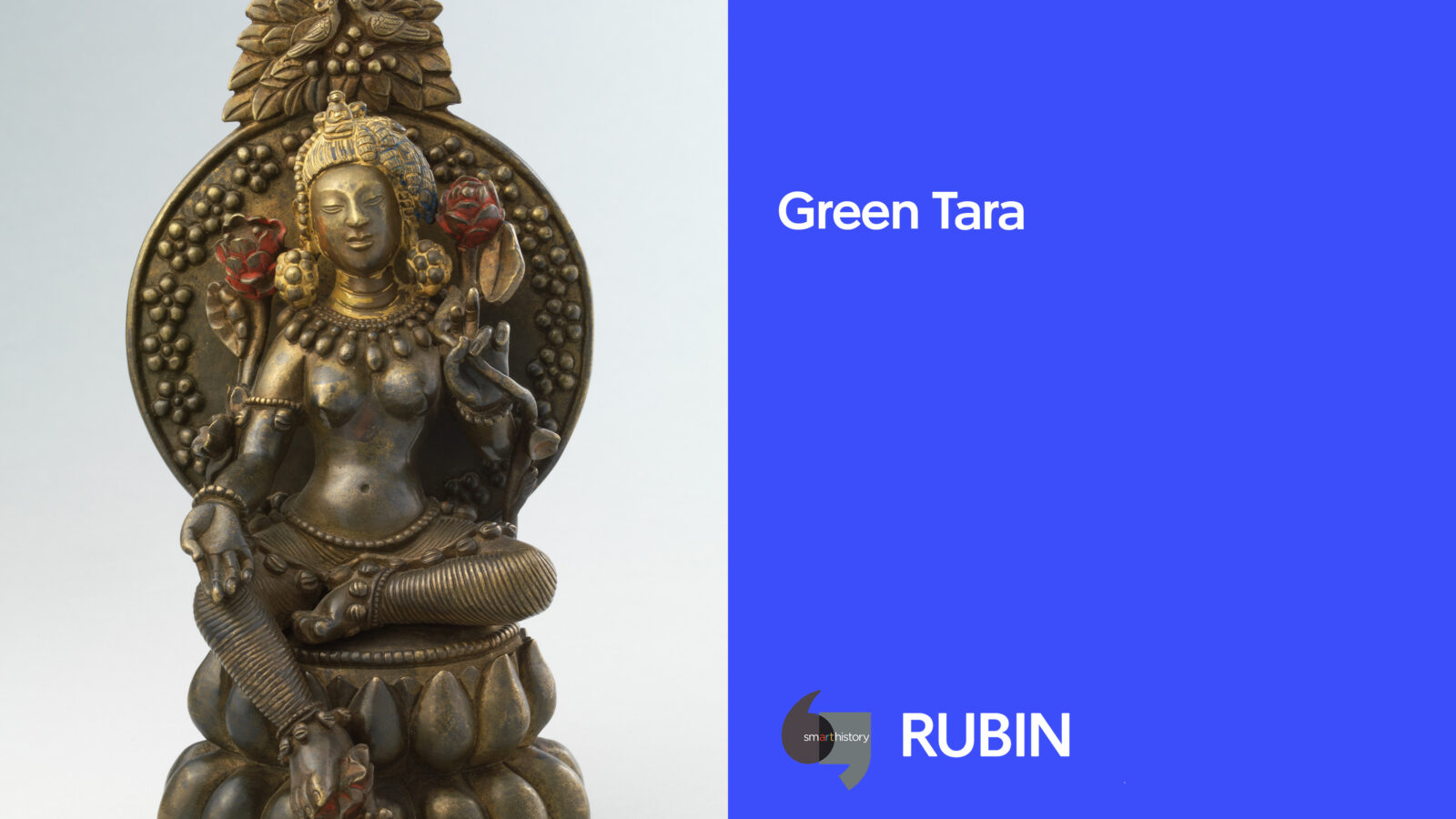
A religious movement that originated in India around the fifth to seventh century with sacred writings and esoteric teachings and practices transmitted from teacher to student through initiation. These remain an important part of Hinduism and Buddhism today.
In Buddhism gender is considered more fluid compared to some other religions. Certain traditions emphasize the importance of all genders in achieving enlightenment. The feminine is considered an embodiment of wisdom and the masculine is an embodiment of method.
A virtuous feeling and deep respect toward an authentic teaching, teacher, or path. Buddhists believe that expansive study, analysis, and meditation are essential steps for cultivating a healthy and enduring devotion.
Female bodhisattvas and tantric deities embody specific enlightened qualities such as wisdom, power, and protection, and can be peaceful or wrathful in appearance.
Today, Tibetans primarily inhabit the Tibetan Plateau, situated between the Himalayan mountain range and the Indian subcontinent to the west, Chinese cultural regions to the east, and Mongolian cultural regions to the northeast. During the 7th to 9th century, Tibetan rulers expanded their empire across Central Asia, and established Buddhism as the state religion.
Get the latest news and stories from the Rubin, plus occasional information on how to support our work.